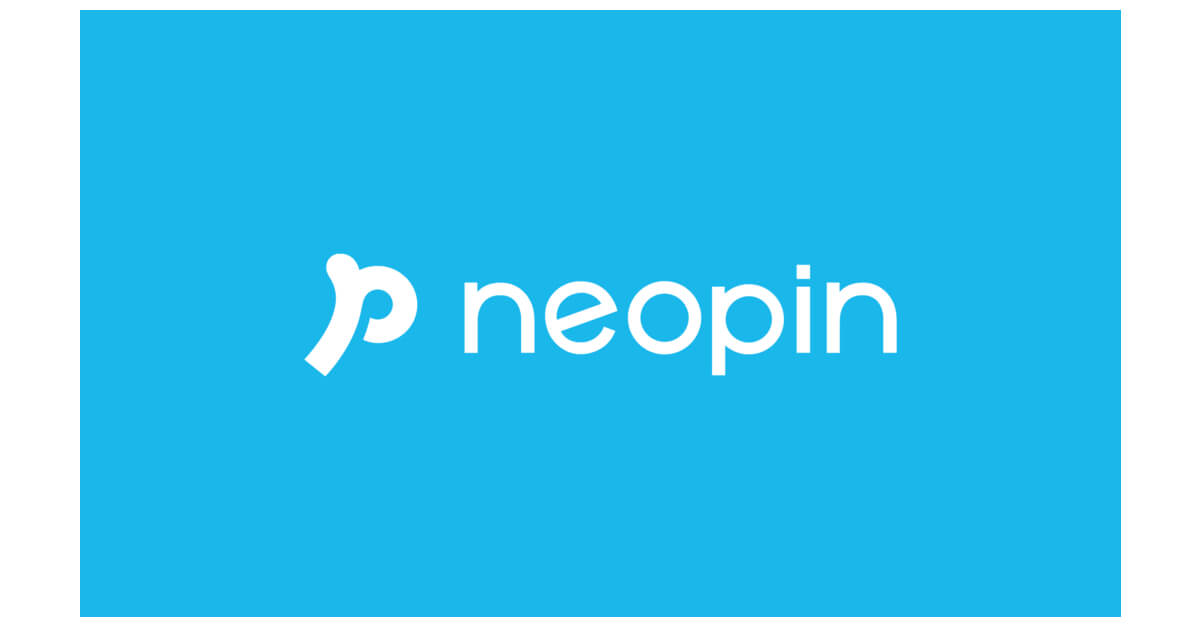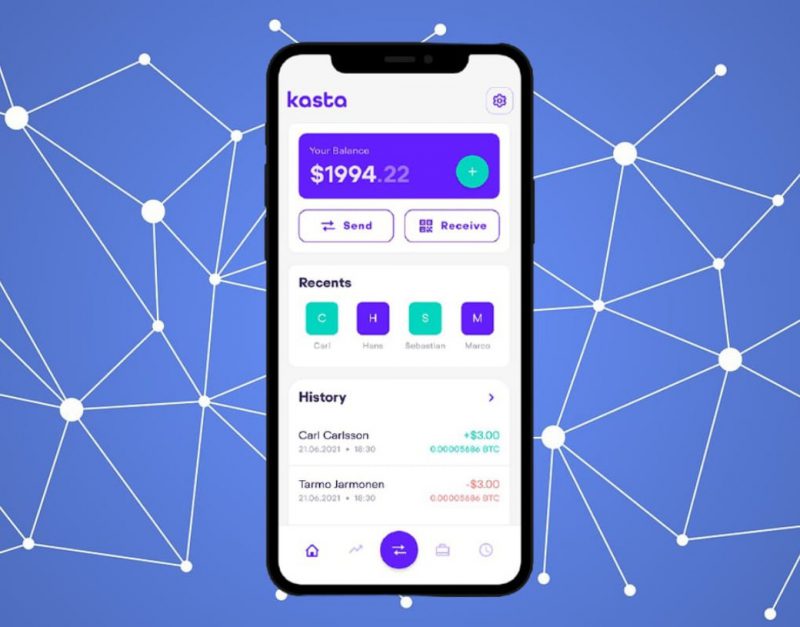Artificial intelligence (AI) and blockchain are like two sides of a whole and are the most transformative technologies of our time. They are having a significant impact on humanity and many industries, and finance is no exception.
What people don’t want to accept is that the future of finance lies in the hands of AI and blockchain; AI is being used to automate tasks, improve decision-making, and personalize customer experiences. Blockchain is being used to create new financial products and services, enhance the efficiency of financial transactions, and reduce fraud.
Per Statista, the global blockchain technology market alone was valued at $5.85 billion U.S. dollars in 2021. This is forecast to reach $1.23571 trillion U.S. dollars by 2030, representing a compound annual growth rate of 82.8 percent.
The market for artificial intelligence (AI) is predicted to increase rapidly over the next ten years, per Next Move Strategy Consulting. By 2030, it is anticipated that its current worth of just under $100 billion US will have increased twentyfold to just under $2 trillion US.
Together, AI and blockchain are poised to revolutionize the financial industry. They have the potential to make financial services more accessible, affordable, and secure.
The Power of Artificial Intelligence in Finance:
According to Sameena Shah, Managing Director of Artificial Intelligent Research at J.P Morgan, this machine will enable growth and break so many financial myths;
It is revolutionalizing the financial industry by enabling financial institutions, including banks, investment firms, and insurance companies, to enhance their operations, offer personalized and inbound services, and make accurate data-driven decisions.
Here are some salient features demonstrating the function and influence of AI in finance:
a. Customer Service: AI-powered chatbots and virtual assistants provide 24/7 customer support, addressing queries, and assisting with basic transactions. Natural Language Processing (NLP) allows these systems to understand and respond to customer inquiries accurately.
b. Risk Assessment: AI algorithms can analyze vast datasets and assess risk more accurately than traditional methods. Machine Learning (ML) models can identify patterns, detect anomalies, and predict potential risks, enabling proactive risk management.
The Rise of Blockchain Technology in Finance:
Blockchain technology is disrupting the finance industry in ways mankind never imagined. This is seen in the aspect of introducing a decentralized and transparent framework for conducting and recording transactions.
Here are the key aspects highlighting the rise and advantages of blockchain in finance:
Advantages of Blockchain in Finance:
a. Enhanced Security: One of the beauties of blockchain in finance is that it provides a high level of security through cryptographic techniques. Transactions are securely stored, and once recorded, they cannot be altered retroactively. The decentralized nature of blockchain reduces the risk of single points of failure and unauthorized access.
b. Transparency: Blockchain offers transparency by providing a shared and immutable ledger visible to all participants, that is, all transactions are recorded on the blockchain, and anyone can view them. This transparency helps prevent fraud, as any changes to the ledger require consensus from the network.
c. Immutability: Once a transaction is recorded on the blockchain, it becomes nearly impossible to modify or tamper with. This feature ensures the integrity of financial records, reducing the risk of data manipulation or fraud.
How It Is Disrupting Traditional Finance
a. Streamlining Payments: Blockchain enables faster, more secure, and cost-effective payment systems. It eliminates the need for intermediaries, such as clearinghouses or correspondent banks, reducing transaction costs and settlement times.
c. Smart Contracts: Smart contracts are self-executing contracts with predefined rules stored on the blockchain. They automatically execute transactions when specified conditions are met, removing the need for intermediaries as seen in traditional finance and reducing the risk of disputes.
d. Cost Reduction: By eliminating intermediaries and reducing manual processes, blockchain can significantly reduce costs associated with transaction fees, reconciliation, and administrative overheads. This cost efficiency benefits both financial institutions and end-users.
e. Improved Efficiency: Blockchain streamlines processes by automating record-keeping, eliminating duplicate data entries, and enabling real-time data access. This efficiency leads to faster settlement times, reduced errors, and improved overall operational efficiency.
Real World and Successful Blockchain Implementations in Finance:
RippleNet, TradeLens, JPM Coin, and the DTCC’s blockchain-based system for US Treasury settlement are just a few examples of existing blockchain applications in the financial sector.
We can anticipate seeing even more cutting-edge blockchain applications in banking over the coming years as the technology progresses. Here are some of the real-world and successful implementations in Finance.
a. Ripple (XRP): Ripple is a blockchain-based payment network that is used by banks to send money internationally. It utilizes blockchain technology to enable faster, more secure cross-border transactions and remittances for financial institutions, reducing costs and settlement times.
b. Trade Finance: Blockchain platforms are being used to streamline trade finance processes, including a letter of credit issuance, invoice financing, and supply chain management. By leveraging this technology in trade finance, reduces the need for intermediaries, minimizes paperwork, eliminates manual reconciliation, and accelerates the flow of goods and funds throughout the supply chain.
c. JPM Coin: JPMorgan Chase introduced JPM Coin, a blockchain-based digital currency, for instant payment transfers between institutional clients, some form of B2B transaction. The technology enables secure, real-time transactions while reducing settlement times and counterparty risks.
For example, a bank in New York could use JPM Coin to send money to a bank in London instantly. It is a stablecoin, which means that it is pegged to the US dollar. This makes it a more stable and predictable currency than other cryptocurrencies.
d. Hyperledger Fabric: Hyperledger Fabric is a blockchain platform that is used by a number of financial institutions to develop distributed applications. Hyperledger Fabric is a permission blockchain, which means that only authorized participants can access the network. This makes it even more secure than a public blockchain, such as Bitcoin.
The Synergy Between AI and Blockchain:
Blockchain technology and artificial intelligence (AI) coming together have the potential to create tremendous synergies that spur innovation and change across a range of industries, including banking. Let me talk about the potential synergies between AI and blockchain and how they enhance each other’s capabilities:
1. AI enhancing Blockchain Systems:
a. Scalability: AI algorithms can optimize blockchain networks by improving scalability. Through techniques like sharding or consensus protocol optimization, AI can enhance the performance of blockchain networks, enabling them to handle larger transaction volumes and increase their efficiency.
b. Privacy: AI techniques, such as federated learning and differential privacy, can enhance privacy in blockchain systems. These methods allow for data analysis while preserving the privacy of sensitive information, making blockchain networks more suitable for applications that require privacy, such as healthcare or financial data.
c. Consensus Mechanisms: AI algorithms can improve consensus mechanisms in blockchain networks. By leveraging AI-based consensus algorithms, such as proof-of-stake with machine learning-based reputation systems, the consensus process becomes more efficient, secure, and resistant to malicious attacks.
2. Blockchain enhancing AI Systems:
a. Trustworthy and Auditable Data: Blockchain provides a decentralized and immutable ledger, offering a reliable source of data for AI systems. By leveraging blockchain as a data storage and verification mechanism, AI algorithms can access high-quality, trustworthy, and auditable data, which is crucial for training models and making accurate predictions.
b. Data Marketplace: Blockchain platforms can create decentralized data marketplaces, where individuals or organizations can securely share and monetize their data. AI systems can benefit from these marketplaces by accessing a diverse range of data sources, thereby improving the accuracy and performance of their models.
Their Collaborative Efforts in Finance
a. Decentralized Finance (DeFi): AI and blockchain are collaborating in the realm of decentralized finance. AI-powered smart contracts and algorithms enable automated and intelligent financial services, such as lending, borrowing, and asset management, within decentralized finance platforms. These collaborations provide enhanced efficiency, transparency, and accessibility in the financial ecosystem.
b. Identity Verification: Blockchain and AI are collaborating to transform identity verification and manage inventories more effectively. Furthermore, AI algorithms can analyze supply chain data. Data integrity in the supply chain is ensured by blockchain, increasing stakeholder trust and transparency. The integration of AI and blockchain in fields including supply chain finance, identity verification, and decentralized finance demonstrates the potential to develop novel solutions that procedures. Blockchain offers a safe and irreversible record of identification information, lowering the danger of identity theft or fraud, while AI systems may analyze biometric data or perform face recognition to verify identities.
c. Supply Chain Finance: By enabling end-to-end visibility, traceability, and automation, AI and blockchain are revolutionizing supply chain finance. To improve logistics, forecast demand, improve accessibility, efficiency, and security.
Future Outlook
If one should look deeply, one will that the future prospects of AI and blockchain in finance are incredibly promising, with both technologies poised to continue reshaping traditional financial systems and empowering individuals. Here are some insights into the future of AI and blockchain in finance:
Emerging Trends and Advancements:
a. Integration of AI and Blockchain: We can expect increased integration between AI and blockchain, leveraging the strengths of both technologies. This includes AI-driven smart contracts, AI-enhanced consensus mechanisms, and AI-powered analytics on blockchain data, leading to more sophisticated and intelligent financial systems.
b. Interoperability and Standardization: Efforts are underway to establish interoperability and standardization frameworks for blockchain and AI technologies. This will enable seamless integration, data sharing, and collaboration across different platforms and ecosystems, fostering innovation and expanding the potential applications in finance.
c. Regulatory Considerations: As AI and blockchain become more prevalent in the financial industry, regulatory frameworks will need to adapt to address challenges related to data privacy, security, and accountability. Regulatory bodies are likely to develop guidelines and regulations specific to these technologies to ensure their responsible and ethical use in finance.
Reshaping Traditional Financial Systems:
a. Enhanced Efficiency: The combination of AI and blockchain can streamline and automate various financial processes, reducing paperwork, minimizing errors, and optimizing decision-making. This will lead to faster transactions, improved operational efficiency, and cost savings across the financial ecosystem.
b. Empowering Individuals: AI and blockchain have the potential to democratize access to financial services and empower individuals. Through AI-driven robo-advisors, decentralized lending platforms, and blockchain-based identity verification systems, individuals can have greater control over their financial lives, access tailored services, and participate in previously inaccessible markets.
c. Financial Inclusion: AI and blockchain can play a significant role in improving financial inclusion by providing access to financial services for underserved populations. Through decentralized finance platforms and digital identity solutions, individuals in remote areas or without traditional banking access can participate in the global financial ecosystem.
What Are The Consideration Ahead for AI and Blockchain Adoption in Finance?
Although AI and blockchain offer significant potential in transforming the future of the financial industry, their adoption also comes with challenges and potential risks. It is important to address these challenges to ensure responsible and ethical implementation:
1. Data Privacy Concerns
a. Data Security: As AI and blockchain rely on vast amounts of data, ensuring the security and protection of sensitive financial information becomes paramount. Robust security measures, including encryption, access controls, and secure data storage, must be in place to prevent unauthorized access or data breaches.
b. Data Ownership and Consent: The use of AI algorithms and blockchain networks raises questions about data ownership and consent. Meanwhile, it is important to set clear guidelines and regulations to define the rights and responsibilities of data owners and users, ensuring that individuals have control over their personal data and give informed consent for its usage.
2. Ethical Implications:
a. Bias and Fairness: AI algorithms can inadvertently perpetuate biases present in the data used for training, leading to discriminatory outcomes. However, we must give careful attention to developing and testing AI models to ensure fairness, transparency, and accountability, especially in areas like credit scoring or loan approvals.
b. Ethical Use of Data: With access to large amounts of personal and financial data, ethical considerations arise regarding its usage. Organizations must establish clear policies and frameworks for responsible data handling, ensuring compliance with privacy regulations and protecting against unauthorized sharing of data.
3. Security and Governance:
a. Cybersecurity Risks: The adoption of AI and blockchain introduces new cybersecurity challenges. The decentralized nature of blockchain networks requires robust security measures to protect against hacking attempts, fraudulent activities, or smart contract vulnerabilities. Regular audits, security testing, and the use of trusted consensus mechanisms are essential.
b. Governance Frameworks: The decentralized nature of blockchain and the autonomous decision-making of AI algorithms necessitate appropriate governance frameworks. Establishing governance models that ensure accountability, transparency, and legal compliance is crucial for responsible and sustainable implementation.
c. Fraud Detection: With AI, we can combat financial fraud while monitoring transactions and identifying suspicious patterns. ML algorithms can detect fraudulent activities in real-time, minimizing losses and protecting customers.
d. Investment Strategies: AI-driven algorithms can analyze market trends, historical data, and news sentiment to generate unbiased investment insights. This technology enables portfolio optimization, risk assessment, and automated trading systems for better investment decision-making.
e. Credit Scoring: AI algorithms can analyze various data points to assess creditworthiness accurately. This allows lenders to make faster and more accurate credit decisions, expanding access to credit for individuals and businesses.
f. Robo-Advisors: AI-powered robo-advisory platforms provide automated investment advice based on individual risk profiles, financial goals, and market conditions. These platforms have democratized investment access, making it more affordable and convenient for a broader range of investors.
Conclusion
I have explored the ways in which AI and blockchain are reshaping the future of finance. I discussed the power of AI in financial institutions, highlighting its applications in customer service, risk assessment, fraud detection, and investment strategies.
As we all embrace the convergence of AI and blockchain, we embark on an exciting journey toward a future where finance is driven by intelligent algorithms, transparent and secure systems, and increased accessibility for all.
The possibilities are immense, and the potential for positive change in finance is within our grasp. Let us eagerly anticipate the transformative impact of AI and blockchain, as they revolutionize the way we interact with money, investments, and financial services
Personal Note From MEXC Team
Check out our MEXC trading page and find out what we have to offer! There are also a ton of interesting articles to get you up to speed with the crypto world. Lastly, join our MEXC Creators project and share your opinion about everything crypto! Happy trading!
Join MEXC and Start Trading Today!



